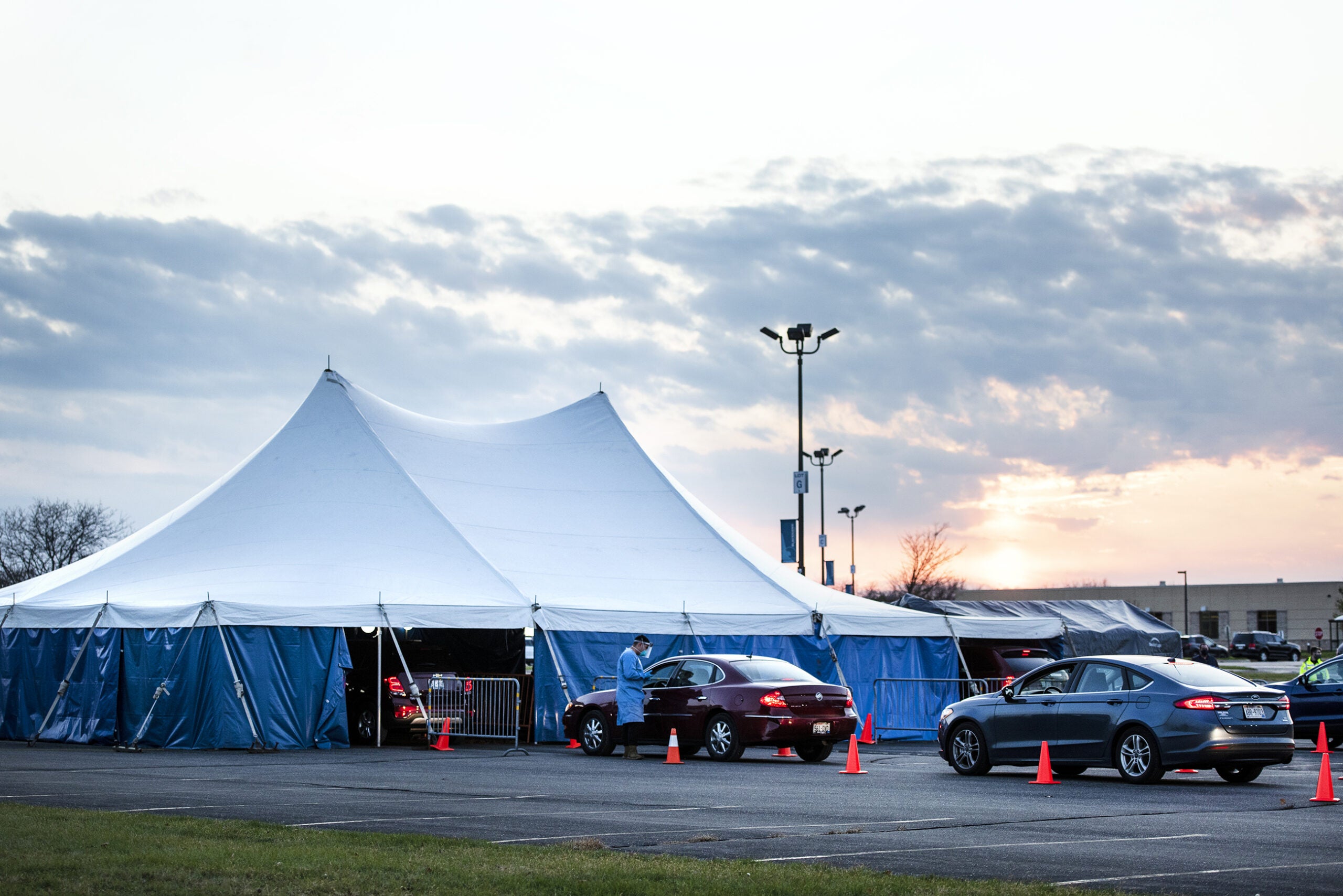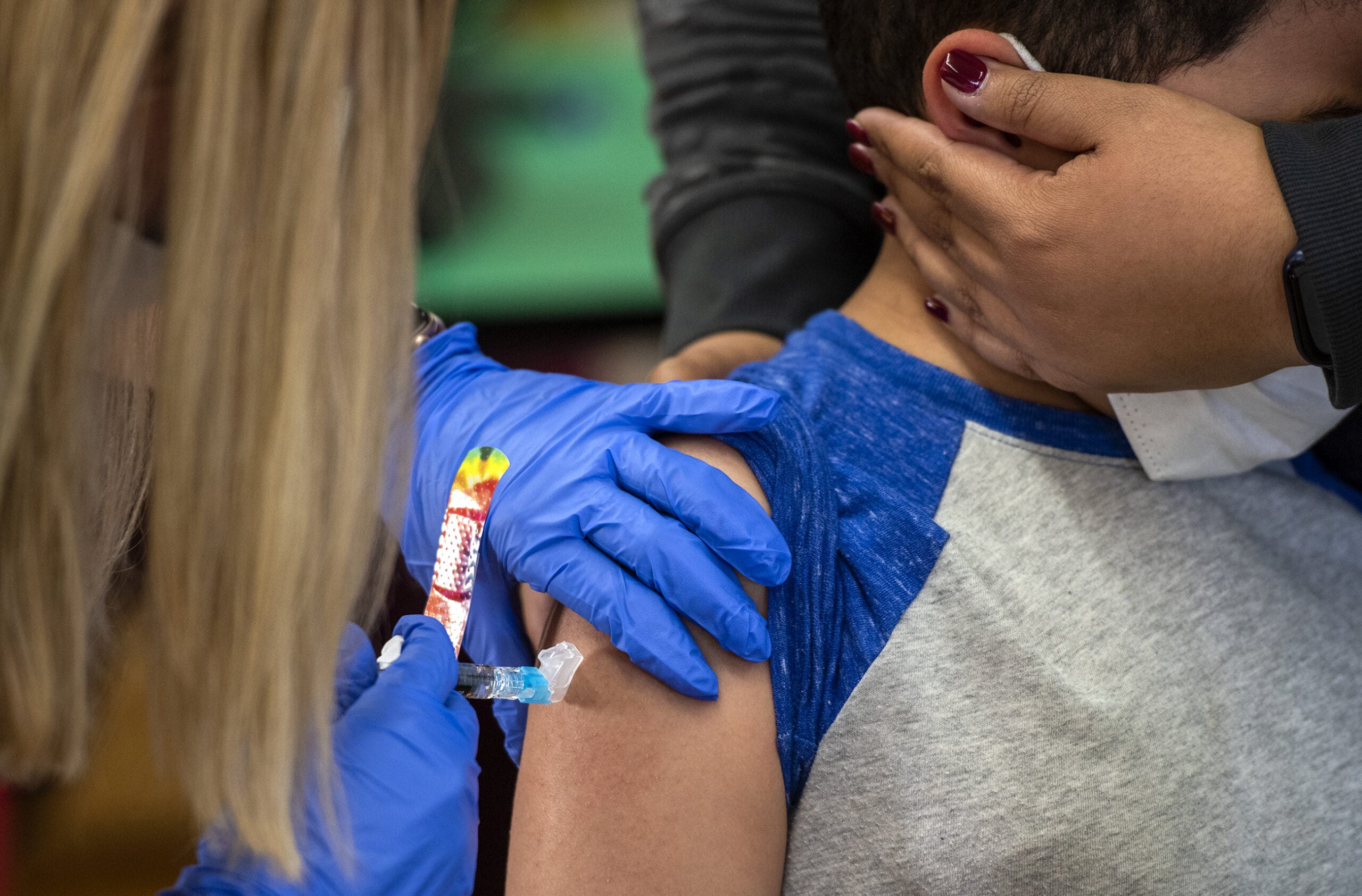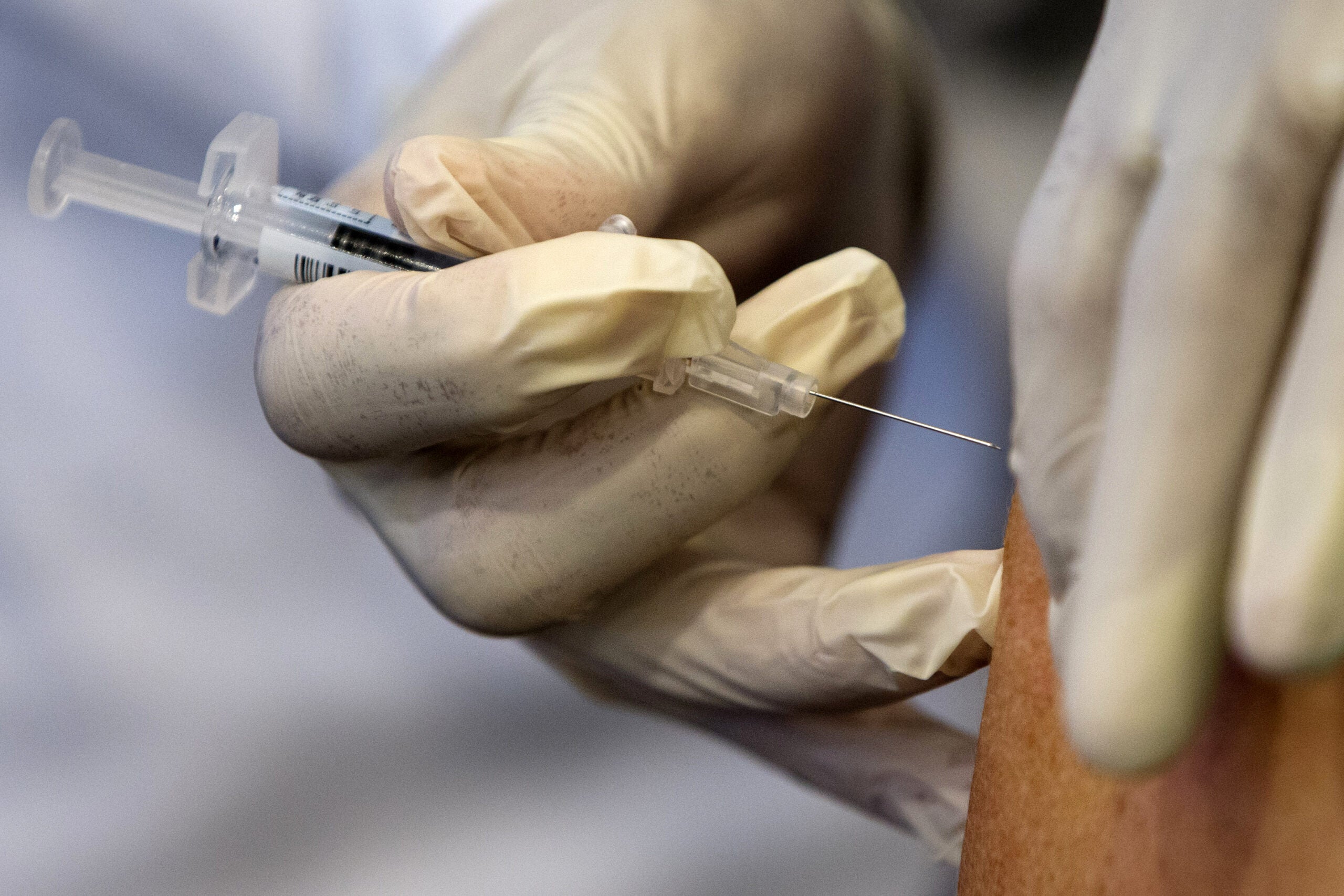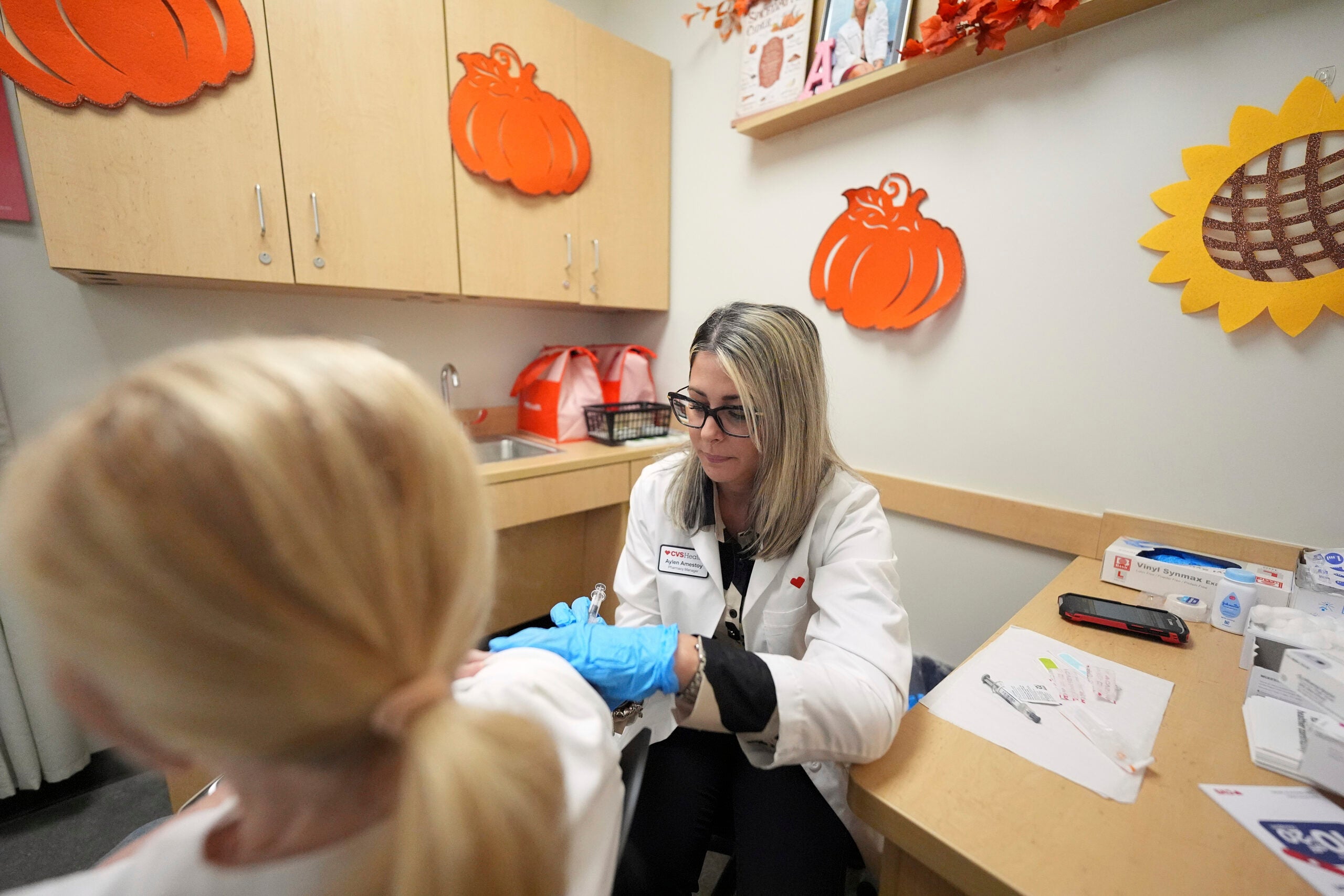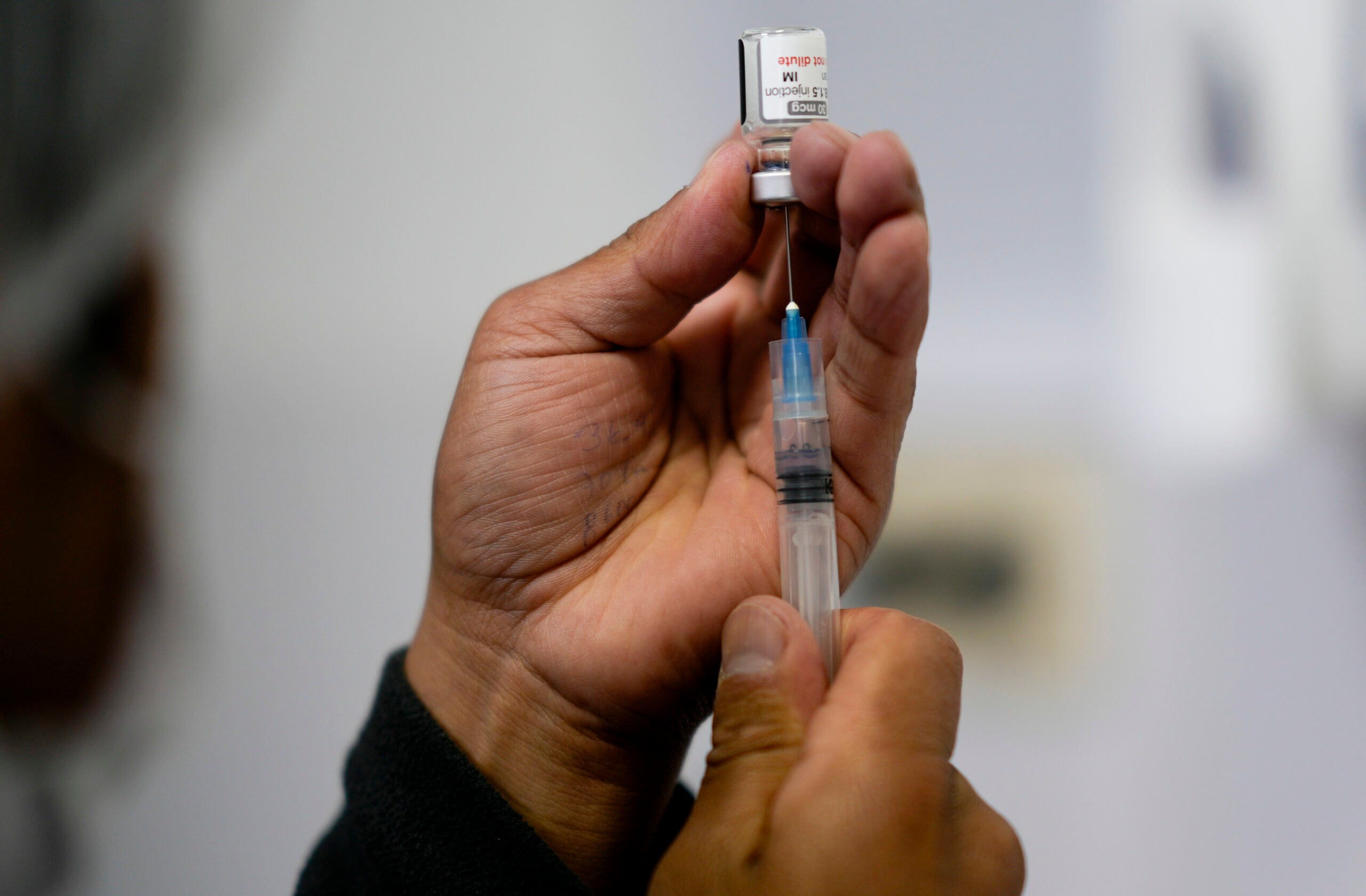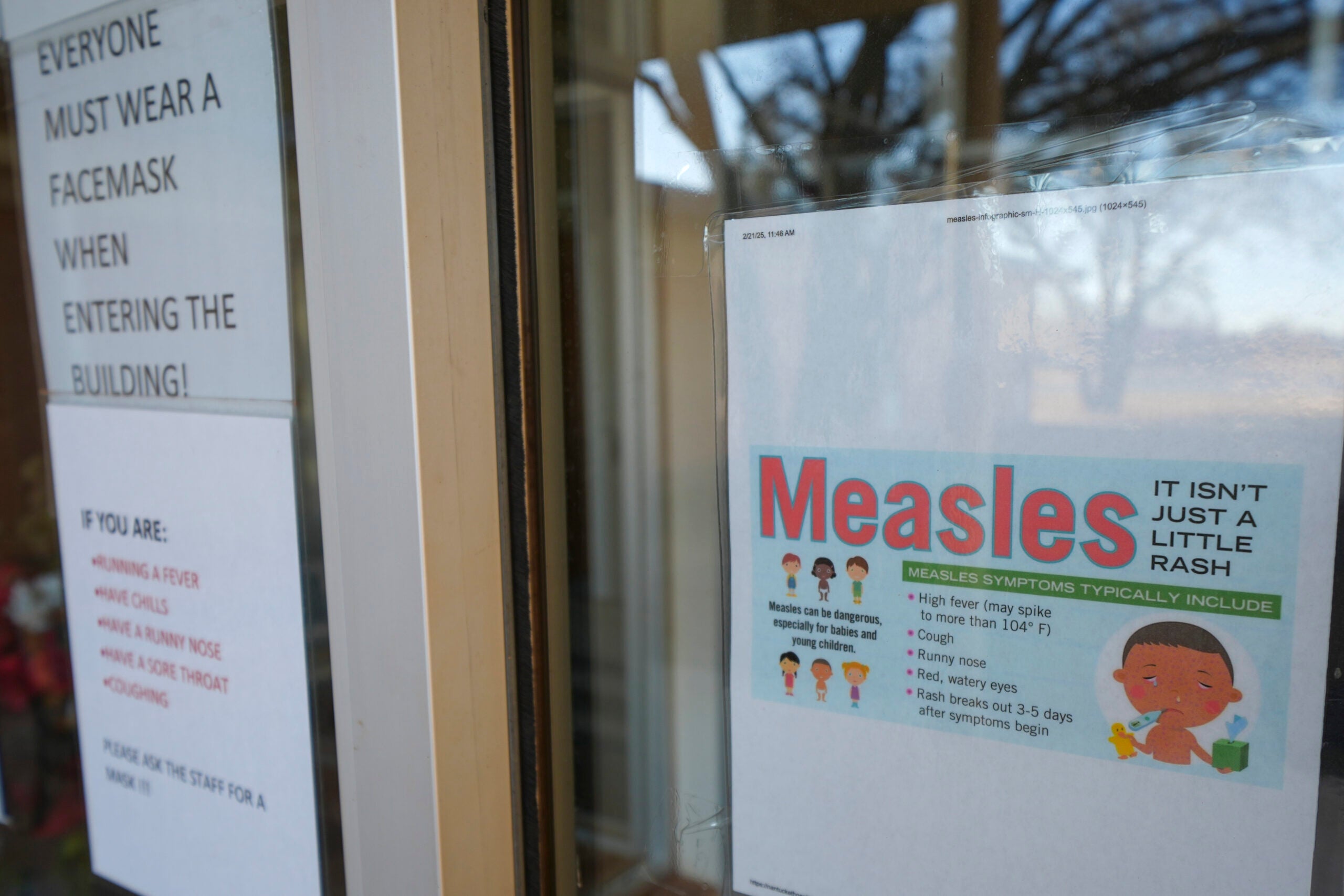A Wisconsin medical leader says COVID-19 cases and hospitalizations are trending in the wrong direction.
Dr. John Raymond, president of the Medical College of Wisconsin, said it does not appear Wisconsin is experiencing a surge in COVID-19 cases at this time.
During a presentation Monday for the Greater Milwaukee Committee, Raymond said the state’s case rate is “too high, and it’s trending higher.” Hospitalizations are also up 49 percent from March 21, when the state reported a record low. On Monday, 34 new hospitalizations were reported.
News with a little more humanity
WPR’s “Wisconsin Today” newsletter keeps you connected to the state you love without feeling overwhelmed. No paywall. No agenda. No corporate filter.
“This isn’t that different than the U.S. in aggregate,” Raymond said during the presentation. “As we all know, there is a severe surge in Michigan, and surges in New York and New Jersey that appear to be plateauing. Minnesota cases are continuing to rise. I hesitate to call it a surge, but there has been a significant uptick in cases for the last three to four weeks.”
Raymond said Illinois has also seen a 50 percent increase in cases over the last two weeks, sending another “warning sign” for Wisconsin.
“We’re at an inflection point of competing forces,” Raymond said. “On the one hand, we’re doing quite well with increasing COVID-19 vaccinations in our country, and especially here in Wisconsin, versus pandemic fatigue and the more contagious variant strains.”
Looking back on the state’s three surges since the start of the pandemic, Raymond said Wisconsin is currently in a better position. He said it’s unlikely a fourth surge in the state would be as severe as the most recent spike seen last November.
“In retrospect, the spring and summer surges were hardly surges, but the November surge was real,” Raymond said during the presentation. “At one point, we were the epicenter of COVID-19 in the country and we came perilously close to overwhelming the capacity of our health systems to render the best care to everyone.”
Oguzhan Alagoz is a University of Wisconsin-Madison professor who studies infectious disease modeling. He agrees another surge in cases in Wisconsin would likely not be as bad as surges before vaccinations started.
“Even if we do see an increase in cases, as long as we vaccinate the vulnerable individuals, our hospitalization and deaths are not going to be as bad as what we have seen over the last several months,” Alagoz said.
He said one major factor affecting the number of positive cases will be how many people stop following safety precautions like mask wearing and social distancing, whether from “pandemic fatigue” or from loosening up after being vaccinated.
Alagoz warns that until the state sees a consistently small number of cases per day, people can not go back to their pre-pandemic behavior.
“I am always worried about what if there’s a new variant coming out, and what if none of the vaccines are effective against it?” Alagoz said. “We still have that threat, and this is why I think people should do the things that are under their control. In addition to vaccinations, we still need to be cautious in our interactions and hand washing, facial mask use. To me, these are no brainers.”
New reports of COVID-19 cases are higher than they were last week in Wisconsin, based on the latest data published by the state Department of Health Services.
DHS reported 402 new cases of the disease Monday, bringing the average for the past seven days to 789 daily cases. One week ago, the average was 591 daily cases. It’s typical for DHS to report fewer confirmed COVID-19 cases on Mondays, with labs usually posting fewer test results the day before.
There were 2,779 negative tests reported Monday.
As COVID-19 cases in Wisconsin are rising, more of the state’s residents are being vaccinated against the disease.
A total of 3,542,552 doses of the coronavirus vaccine have been administered in Wisconsin as of Monday, with 69.6 percent of Wisconsinites age 65 and up fully vaccinated.
As of Monday, 1,423,723 people in Wisconsin, or 24.5 percent of the population, have been fully vaccinated. Anyone in Wisconsin age 16 and up is eligible for a coronavirus vaccine.
Increasing rates of vaccination have provided a sense of hope after a yearlong pandemic that has claimed the lives of 6,680 people in Wisconsin. There were three new deaths from COVID-19 reported Monday.
Other DHS data from Monday include:
- 585,710 total cases of COVID-19 since the pandemic began.
- 3,361,601 total tests administered, 2,775,891 of which have been negative since the pandemic began.
- 28,174 people have been hospitalized because of the disease, or 4.8 percent of all positive cases, since the pandemic began.
- Daily testing capacity remains at 59,273, though only 3,181 new test results were reported Monday.
Coronavirus rates vary from county to county. In order to track COVID-19 activity levels, DHS looks at the number of new cases per a county’s population over a 14-day period — and whether there’s an upward or downward trend in new cases. Activity levels range from “critically high,” “very high,” “high,” “medium,” to “low.”
As of Wednesday, DHS data showed the state had no counties with a “critically high” level of COVID-19 activity. One county — St. Croix — has a “very high” level, and the majority of Wisconsin counties have “high” levels of activity. There were growing case trajectories in 23 counties, and shrinking trajectories in two. Wisconsin’s overall COVID-19 activity level is “high.”
For more about COVID-19, visit Coronavirus in Wisconsin.
Wisconsin Public Radio, © Copyright 2025, Board of Regents of the University of Wisconsin System and Wisconsin Educational Communications Board.

